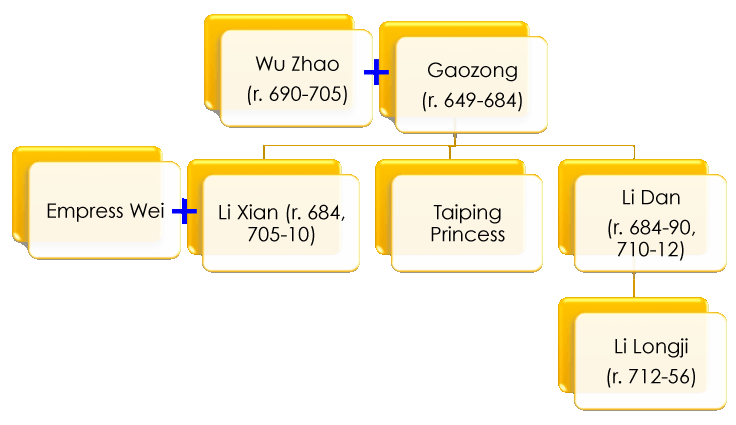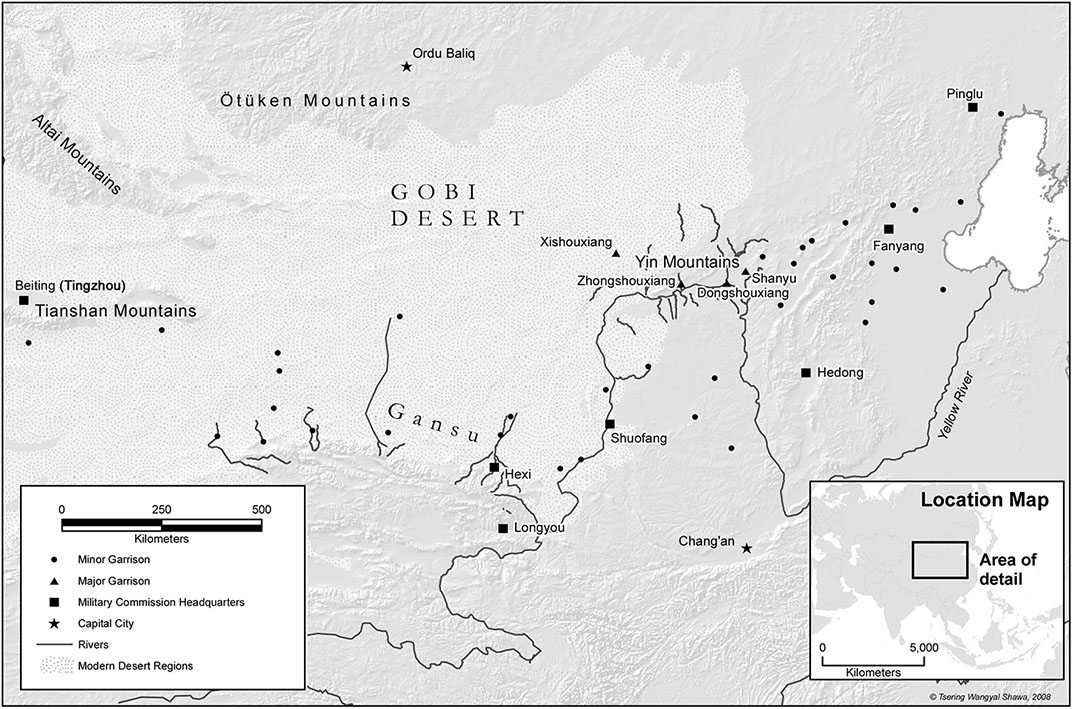
Agriculture
Bureaucracy of Confucian scholars
Status higher in Han, Northern Dynasties or Tang?
"The Han dynasty stands out as probably the longest period of intense female influence over the top reaches of government in the long history of China," (Hinsch, p. 171)
[As a result of Tabgach influence in] "the north of the Yellow River it is usually the wife who runs the household...The traditional niceties between husband and wife are seldom observed, and from time to time he even has to put up with her insults," (Yan Zhitui (531-ca. 591), quoted in Hansen, p. 165)
“Tang China was perfectly suited for the ascent of a historical anomaly like Wu Zhao,” (Rothschild, p. 11)
Trade Imports
Spices
Glassware
Byzantine bottle found in Famen (Dharma Gate) Monastery, Shaanxi (Also see Hansen, pp. 215-16, 219-20)
Precious metals
Silver and gold coins and bullion
Wares
Gilded silver ewer from Bactria
Buried ca. 569 in Gansu, China
What is the origin of the imagery on the ewer?
Spread of artistic styles
Ewers
Mirrors
Pastoral Nomads
Turk Challenge
61 Turk Raids, 621-626
Taizong's truce with Xieli Qaghan at Bian Bridge
E. Turks defeated, 630
Heavy snows
Internal dissent, 627-30
Taxes
Lack of booty?
W. Turk Campaigns, 640
Turfan, 640
Kucha, 648
Failed invasions of Koguryō, 645 and 647
Regular Fubing troops
Cavalry and infantry
Turk and other nomad auxiliaries
Cavalry
Gaozong (r. 650-83)
Strokes 660, 675
Evidence that he hunted, 660-75
Wu Zhao (r. 690-705)
W. Turks defeated, 657
Expansion to Sogdiana
Conquest of Koguryō, 668
Only 3 major raids 650-678
Turk revolts 679-82
Intense Turk raiding
53 major attacks 679-711
Tang/Zhou dynasties on defensive
Zhou Dynasty (690-705)
Deposed in 705
Blank stele (Rothschild, p. 212)
“Foreign Ambassadors”

Li Longji
Palace coups, 710, 712
Controls kin
Emperor's and Empress’ families excluded from office
Minghuang "Brilliant Emperor"
Wu Zhao & sons in power (ca. 680-705)
Turk and other steppe nomad raids
35 major raids, 684-711 (1.29/yr)
Xuanzong (r. 712-56)
Garrison system expands by 740
7 Military commands
490,000 troops
Turk and other steppe nomad raids
9 major raids, 712-755 (0.209/year)

Li Linfu, Chief Minister, 736-52
Yang Guifei, "Precious Consort Yang," 740s
Yang Guozhong, Chief Minister, 752-55
Sogdian and Turkic
Lushan=Rokshan “Light”
Conflicts with Yang Guozhong from 753
Revolt in 755
1. Chapter 8 covers the period from 685 to 690 when Wu Zhao was regent to her son before founding her own Zhou dynasty. Why did Rothschild choose the title “Sage Mother Rising” for the chapter?
2. The next two chapters straddle Wu Zhao’s regency in the late 680s and her Zhou dynasty founded in 690.
3. Rothschild writes on the bottom of page 156, “Wu Zhao skillfully counterbalanced her dark aspect as Queen of Terro with her benevolent image as a compassionate and merciful Saintly Mother. What does he mean?